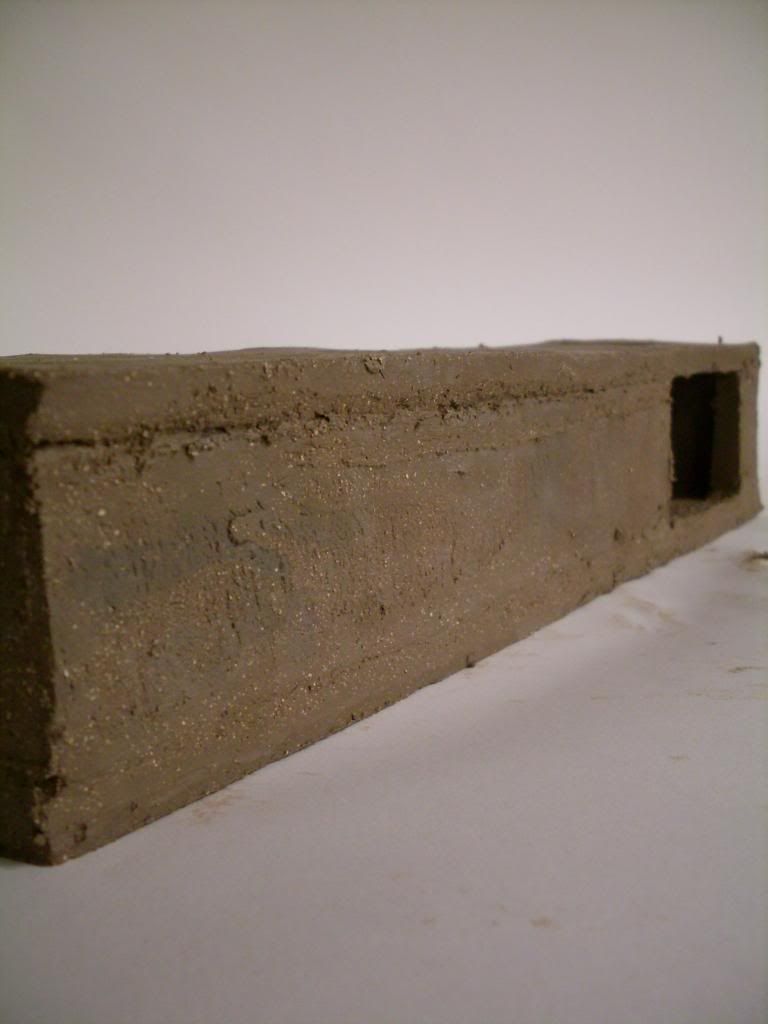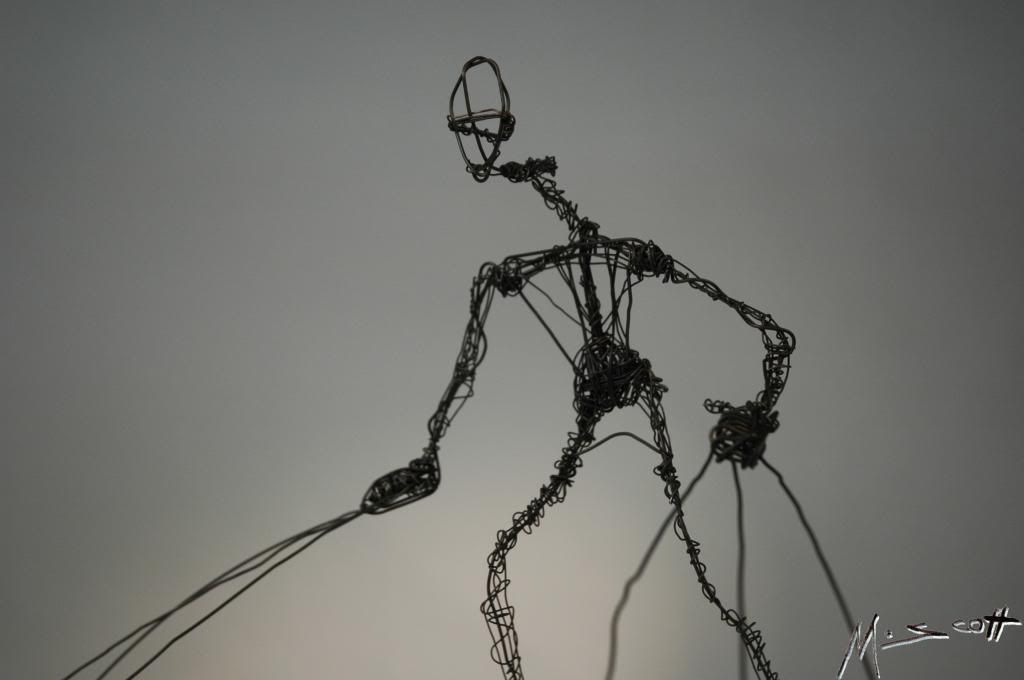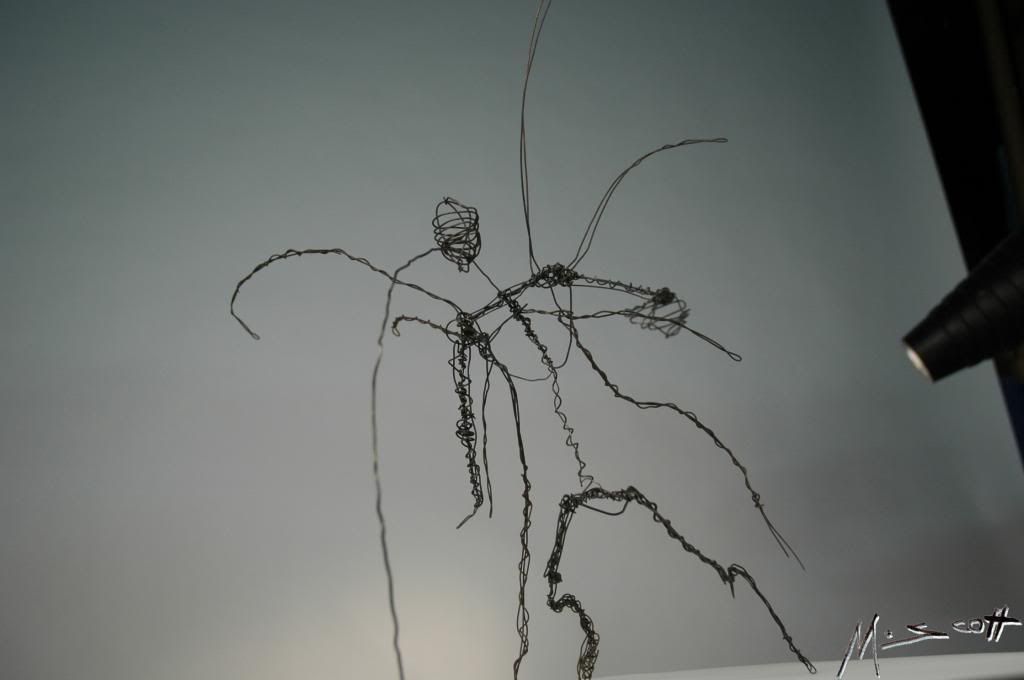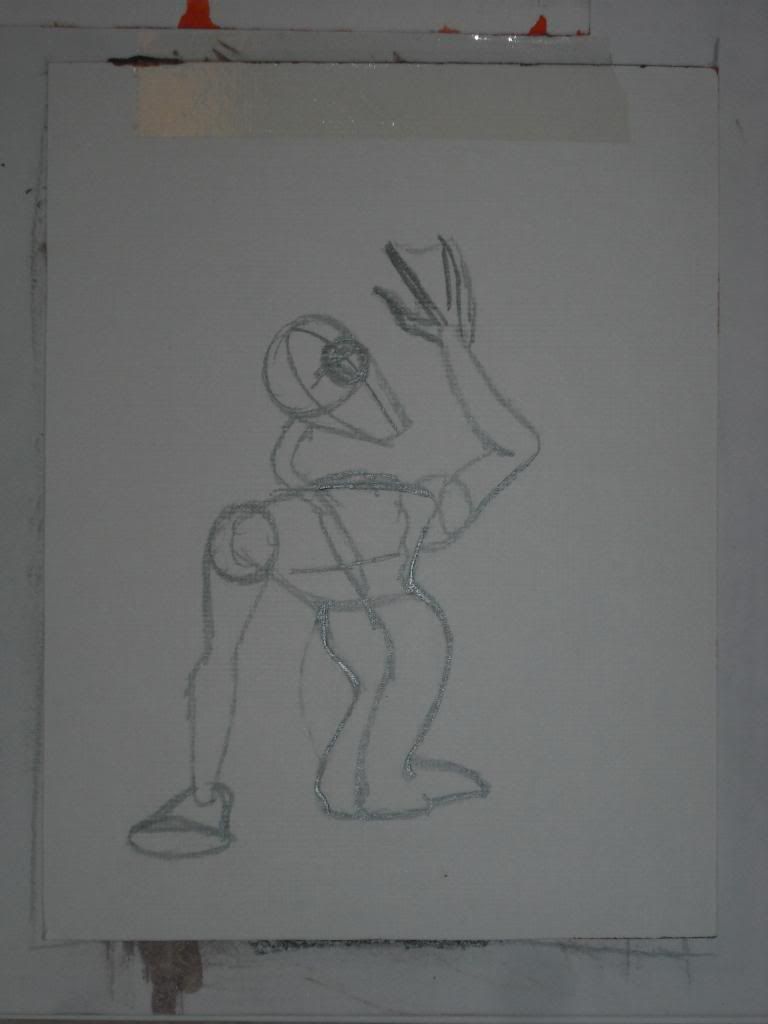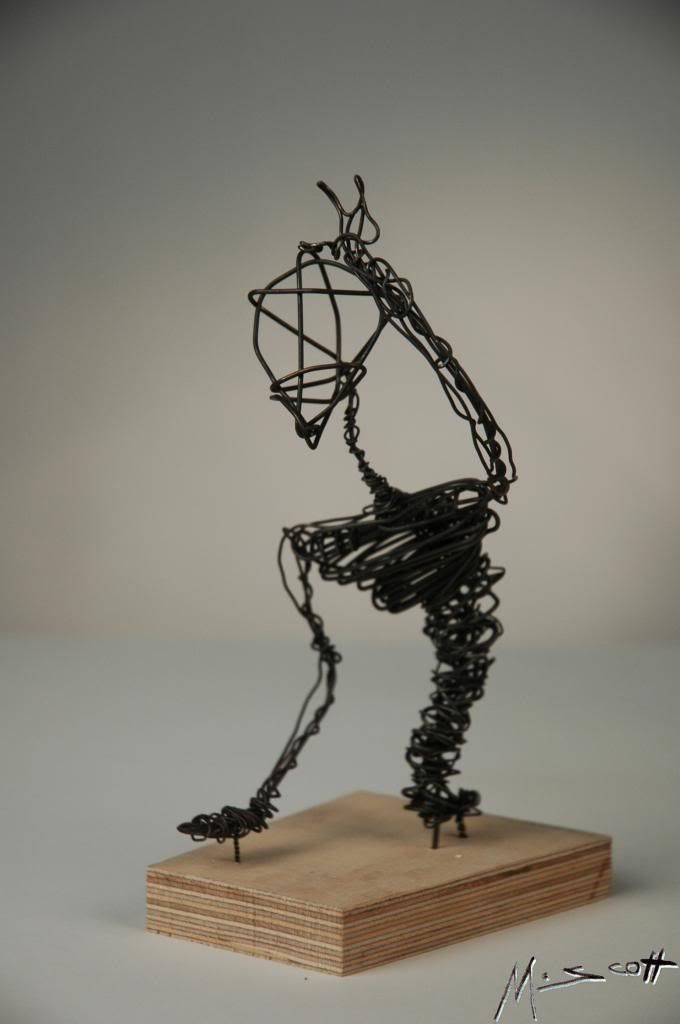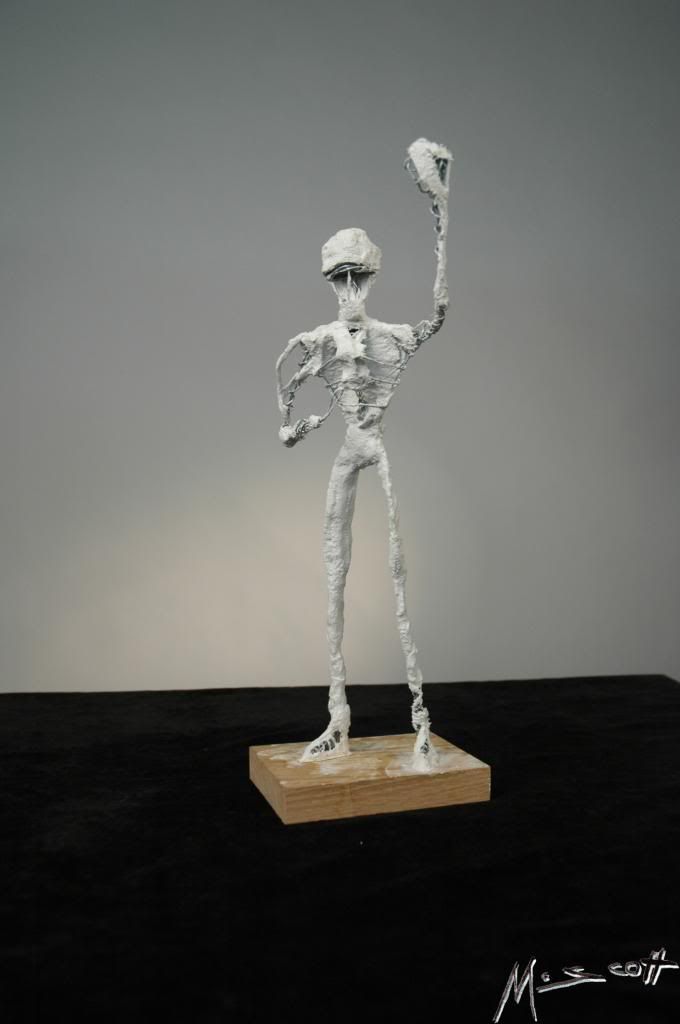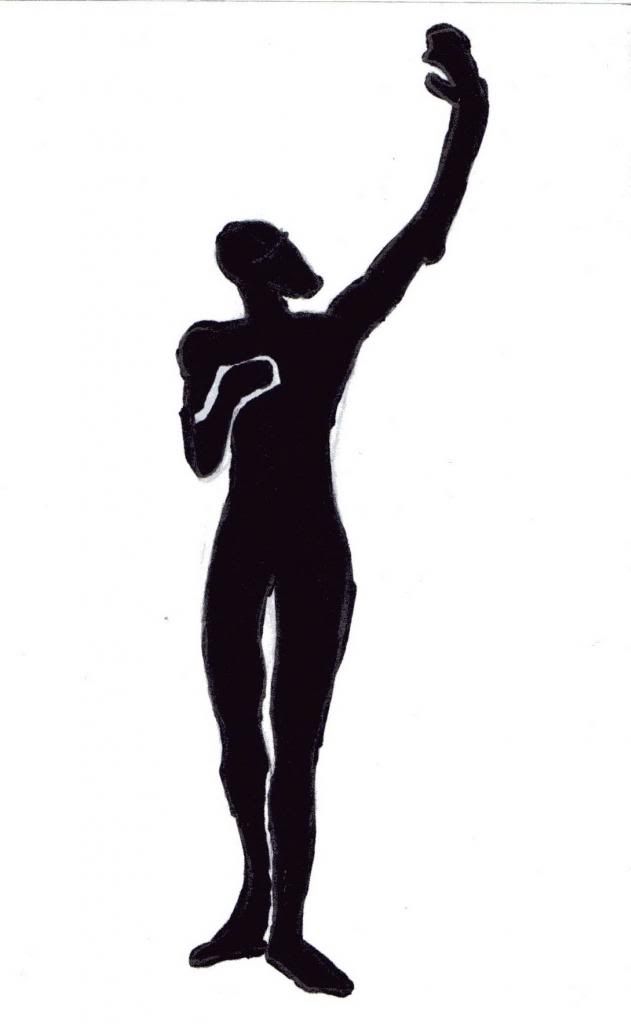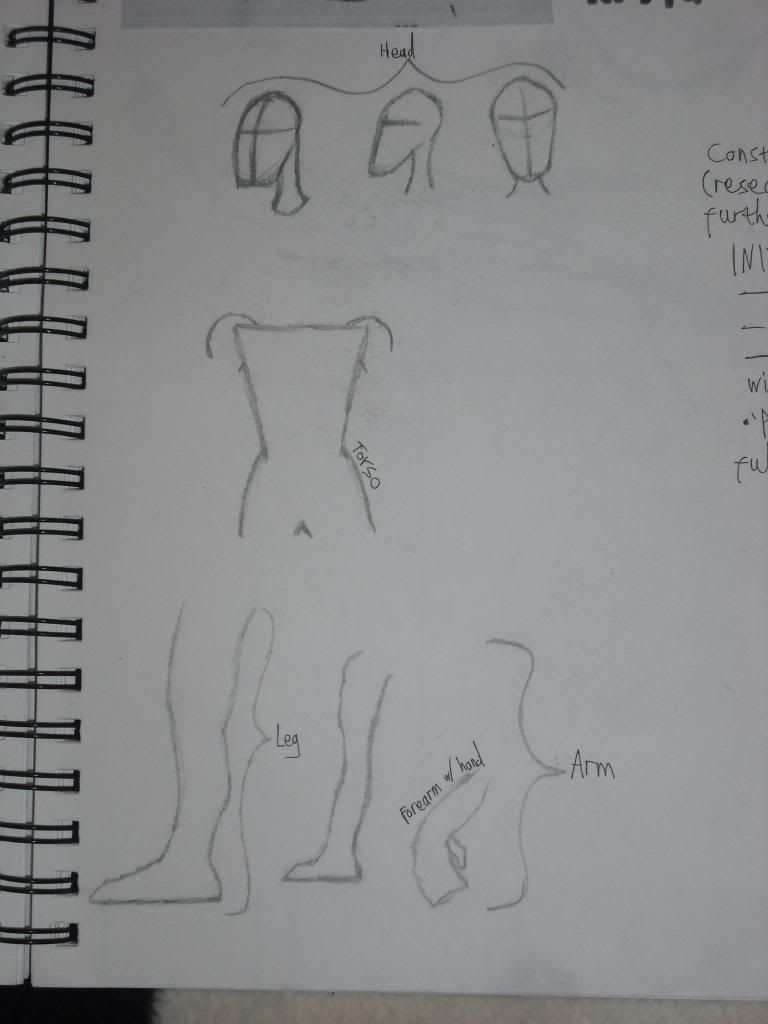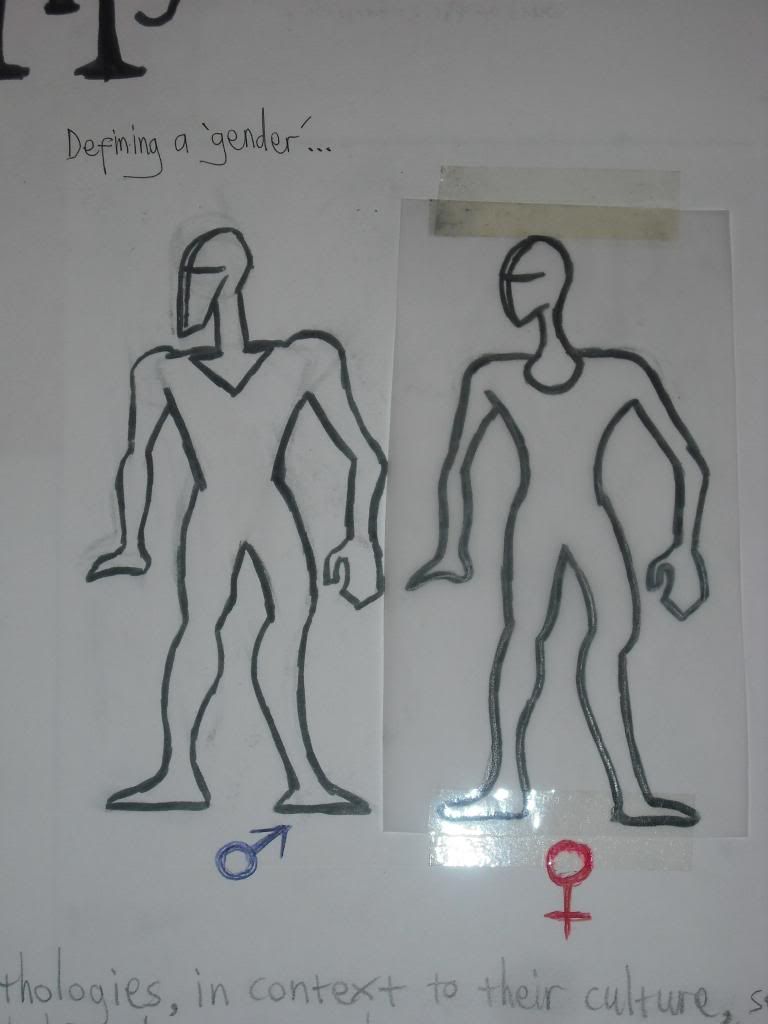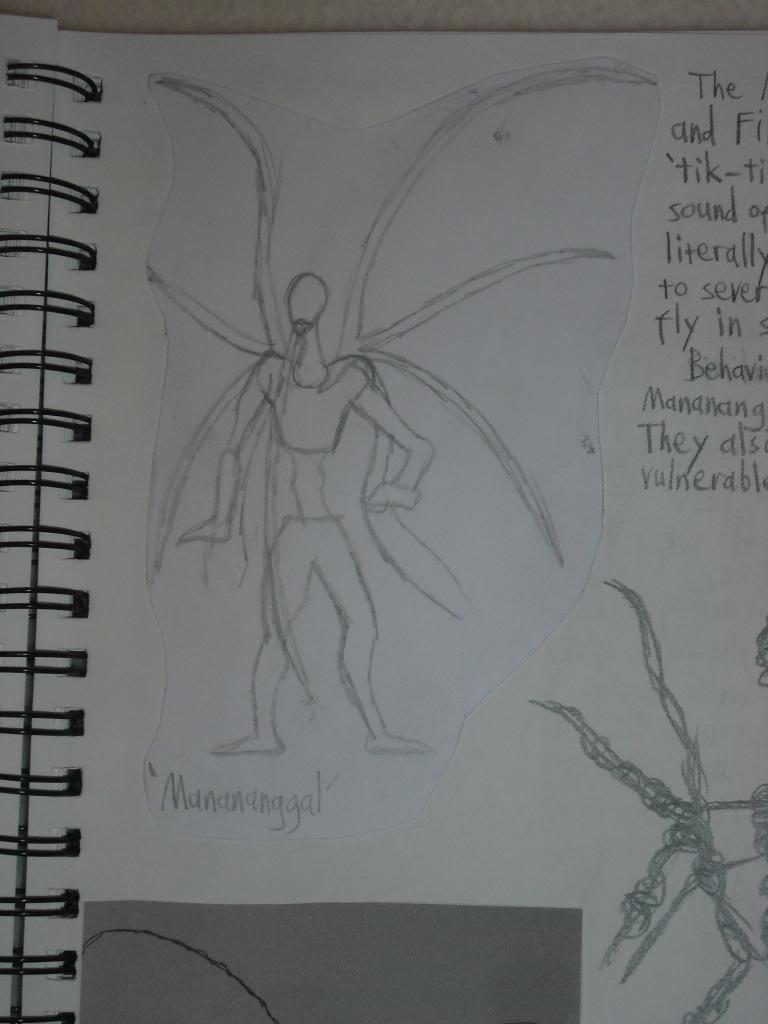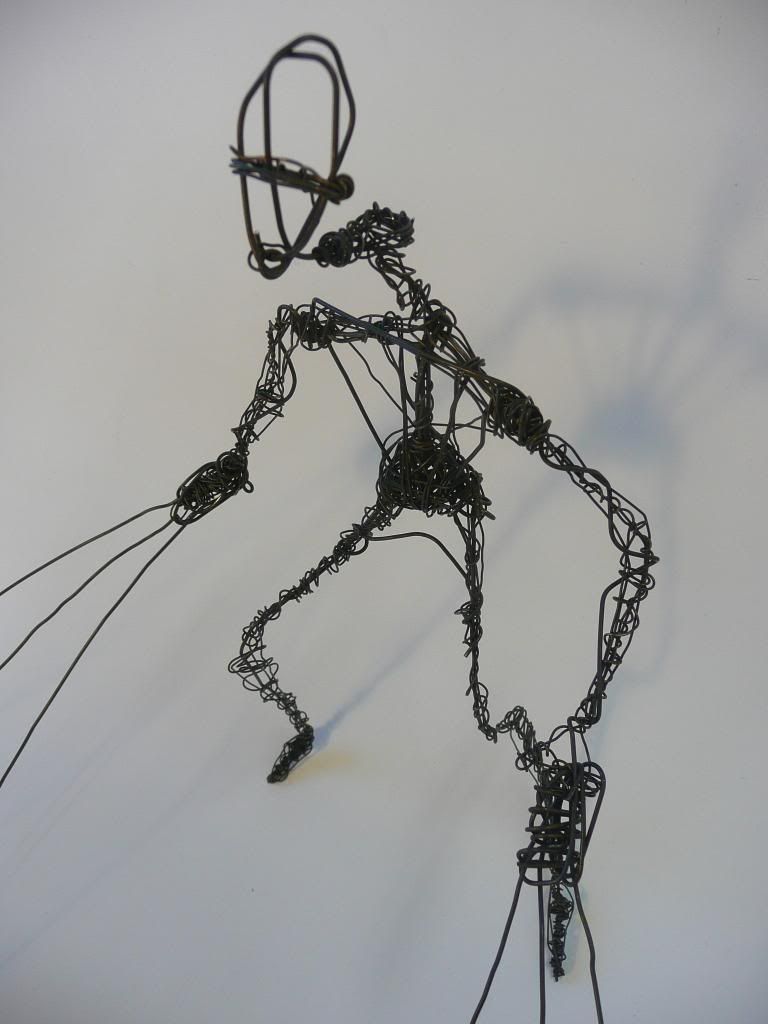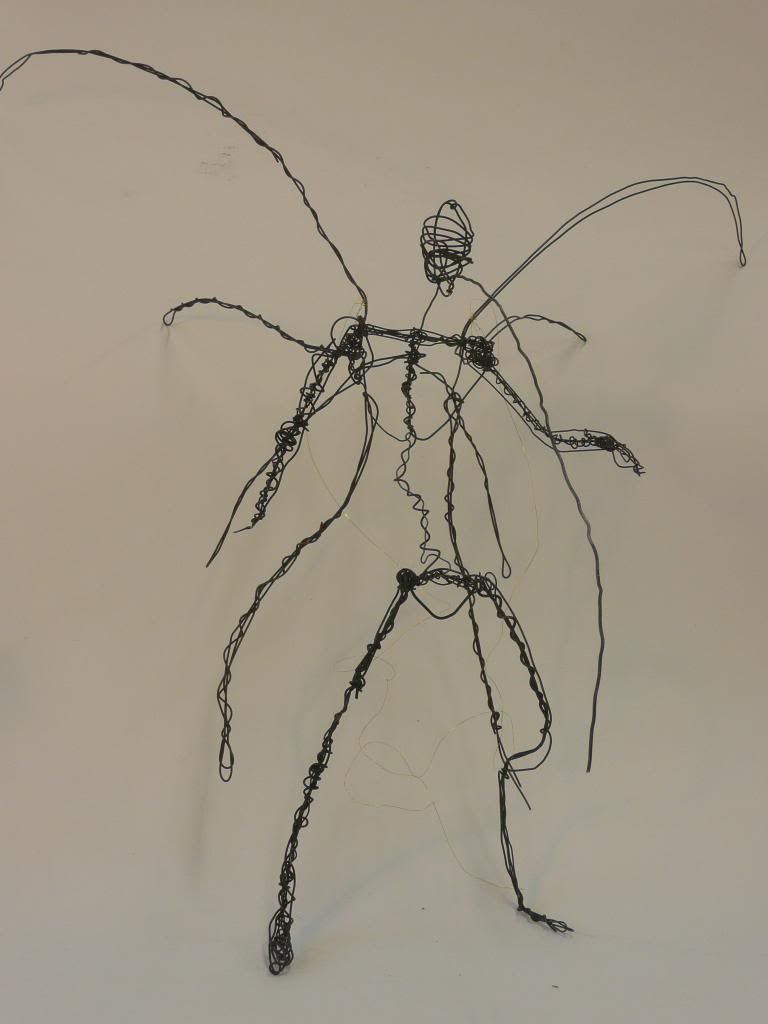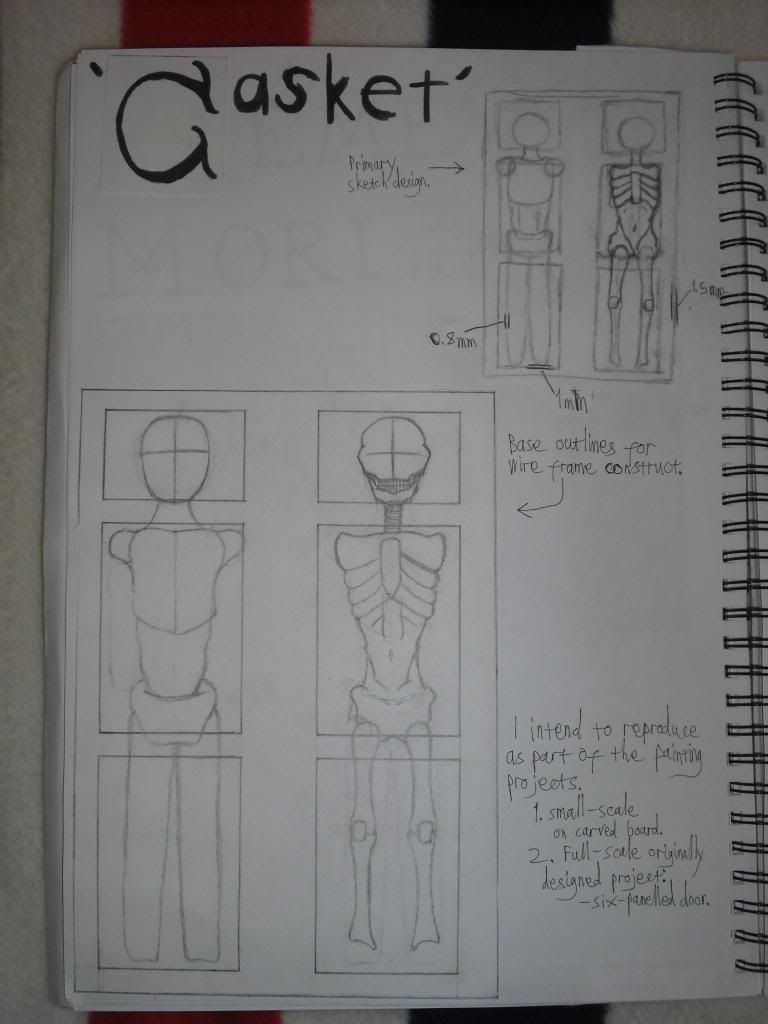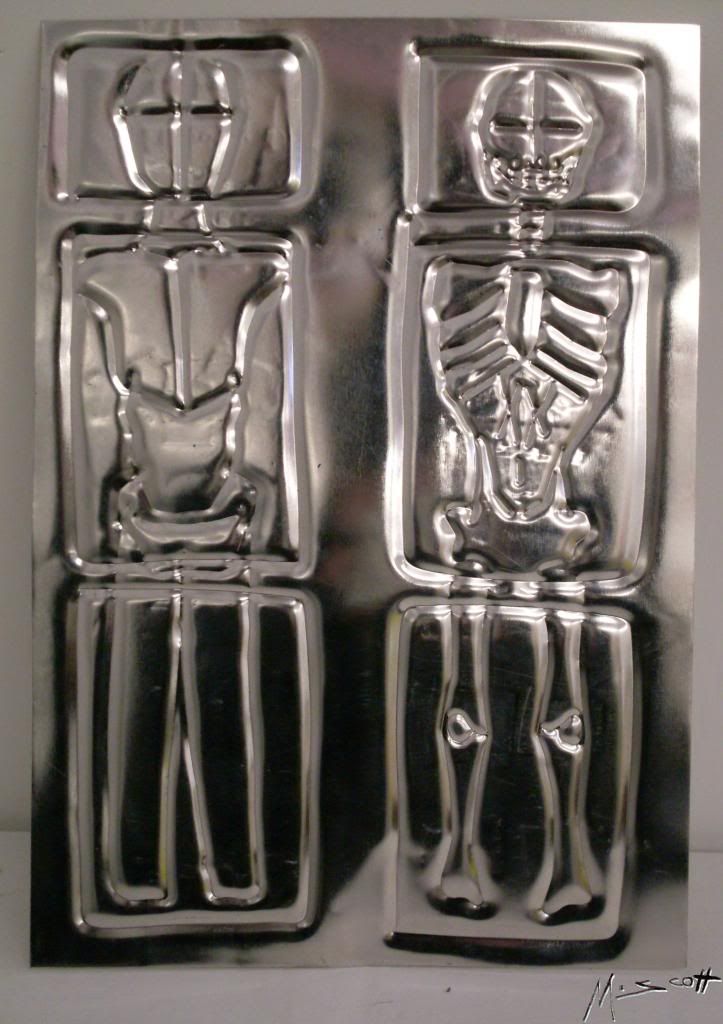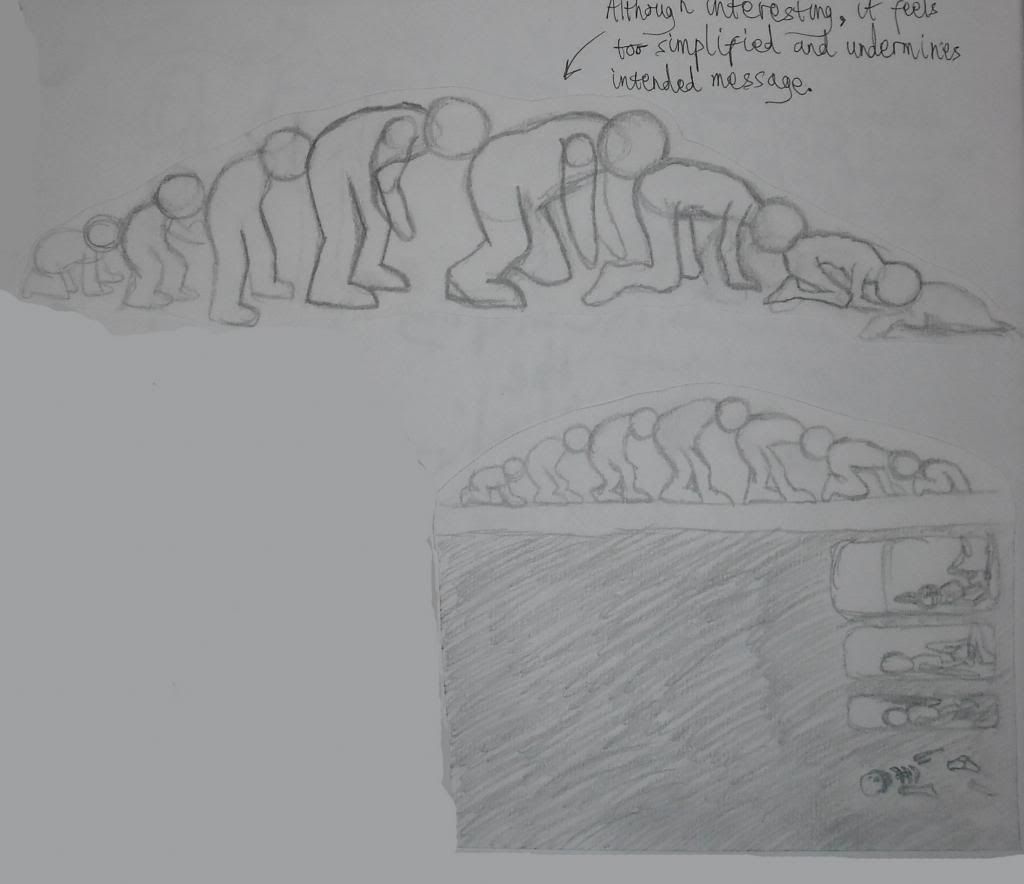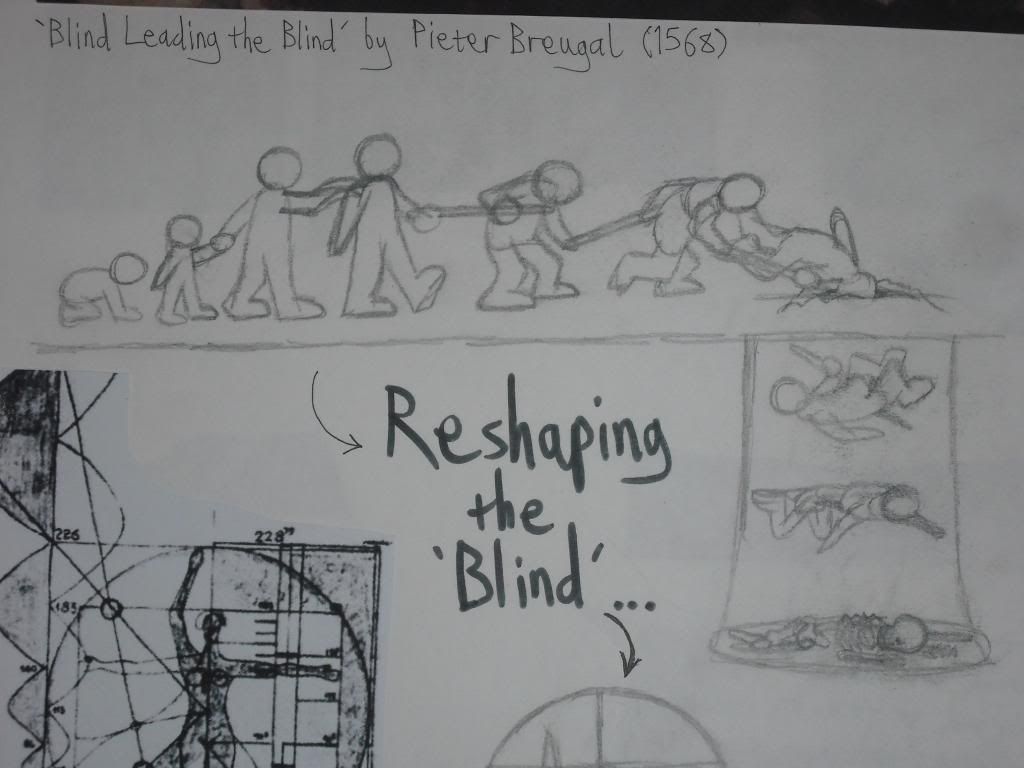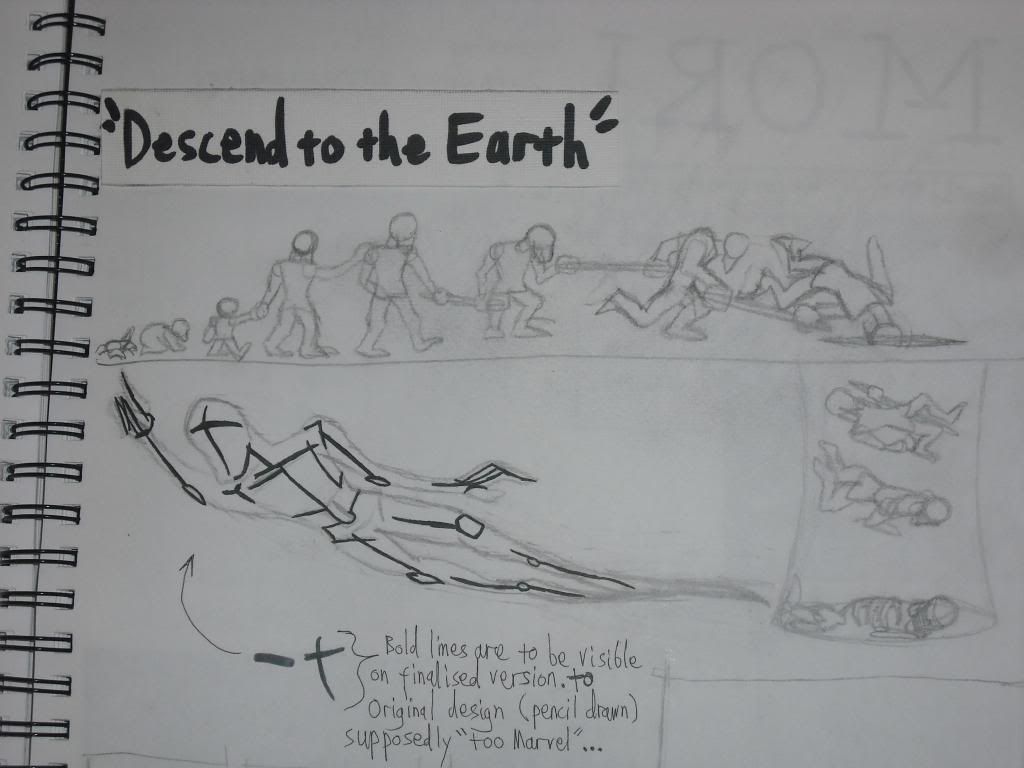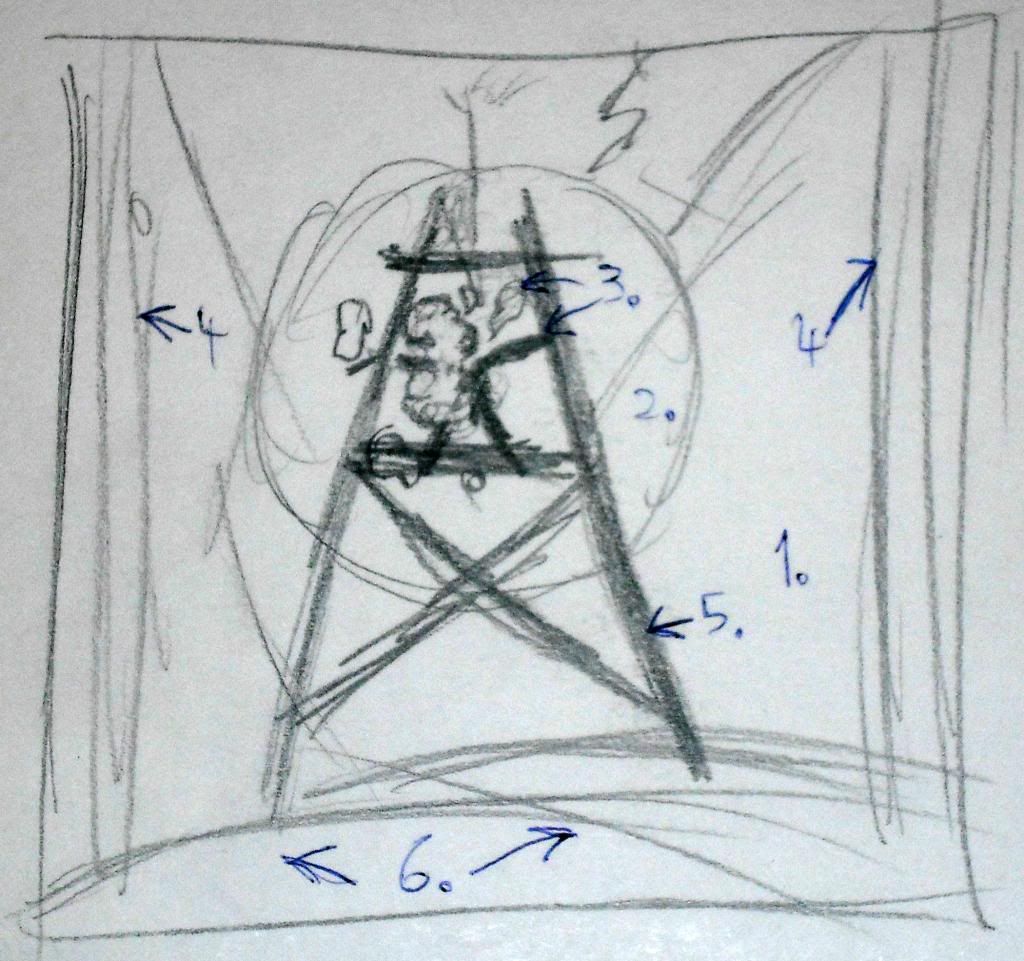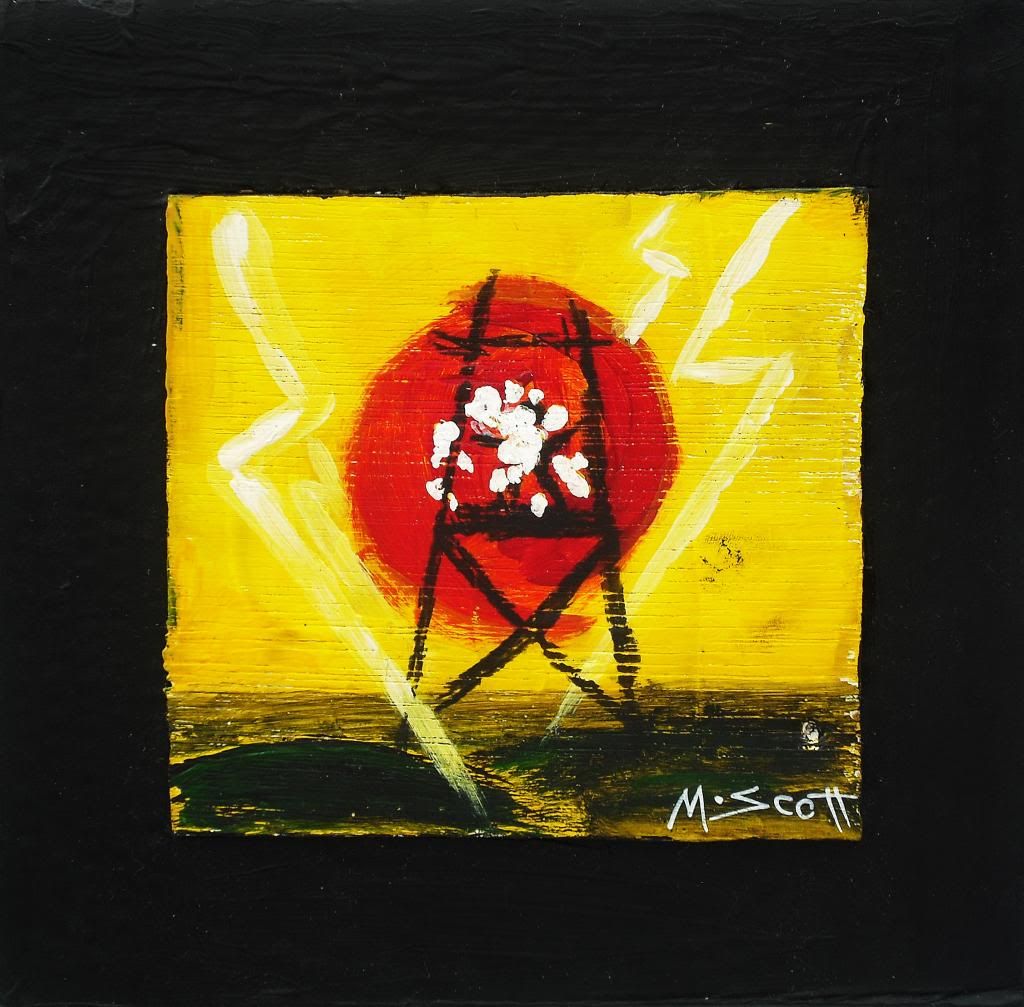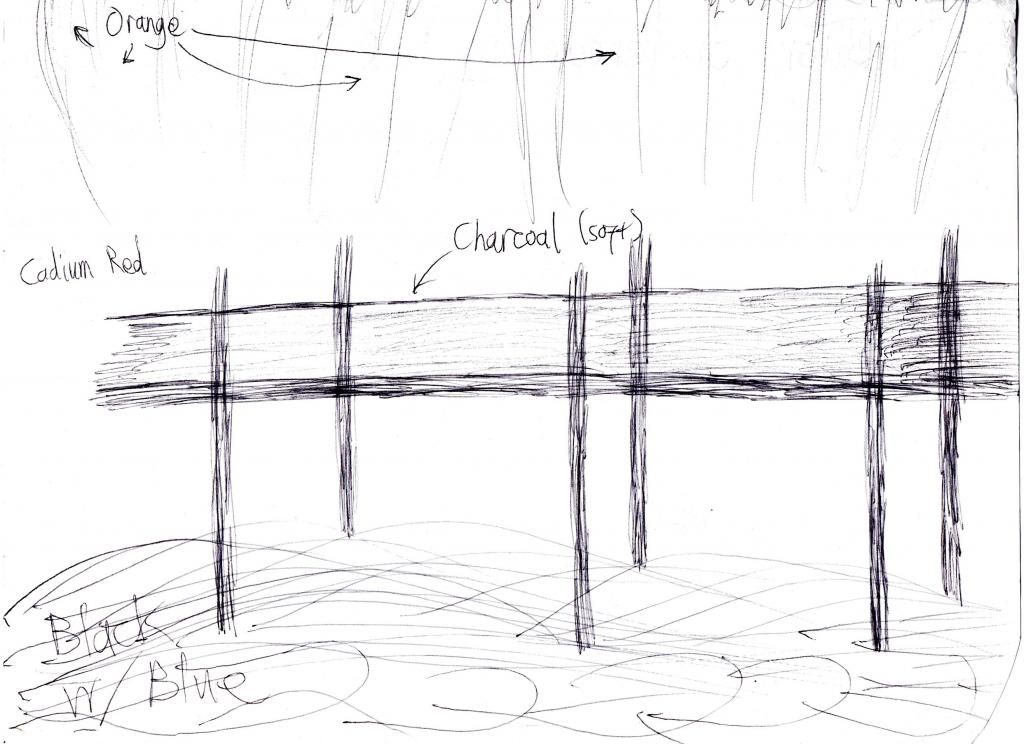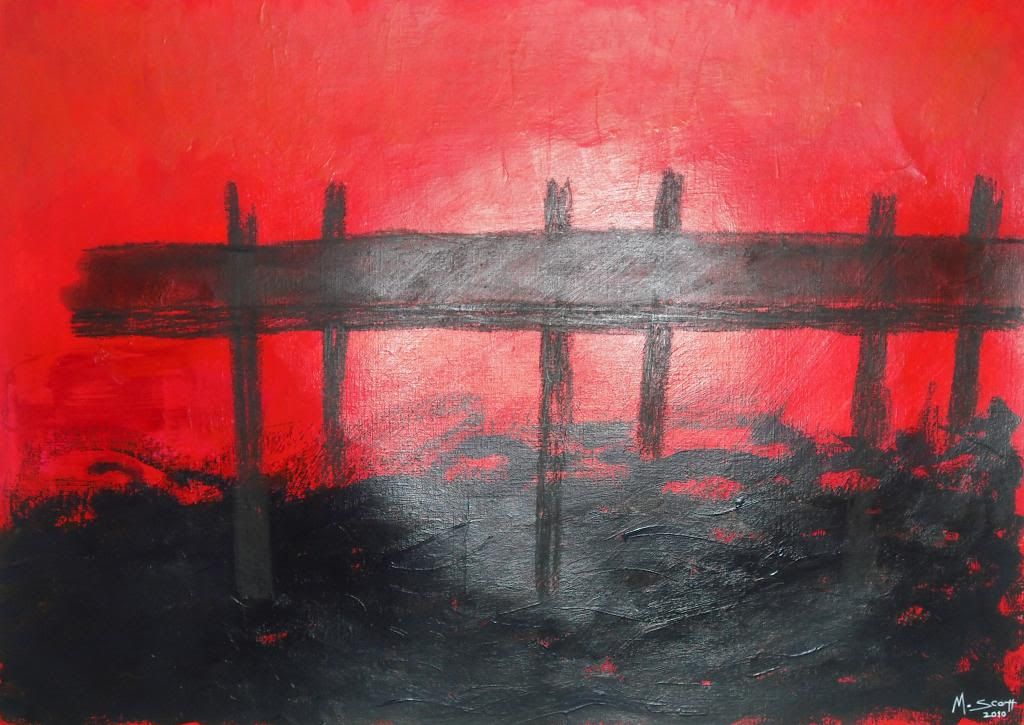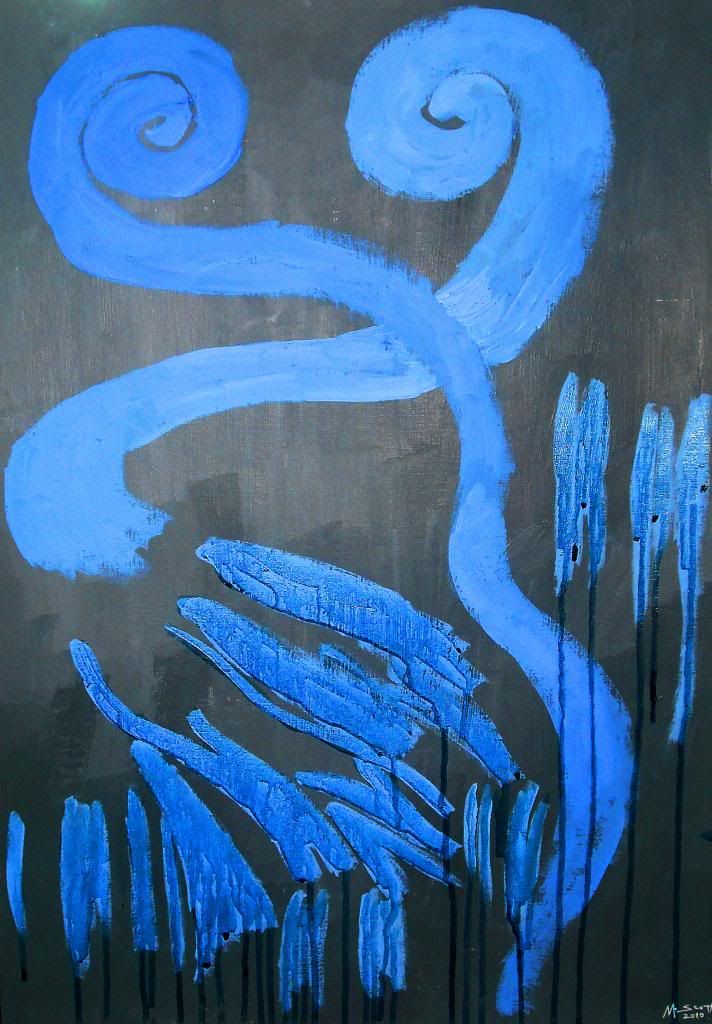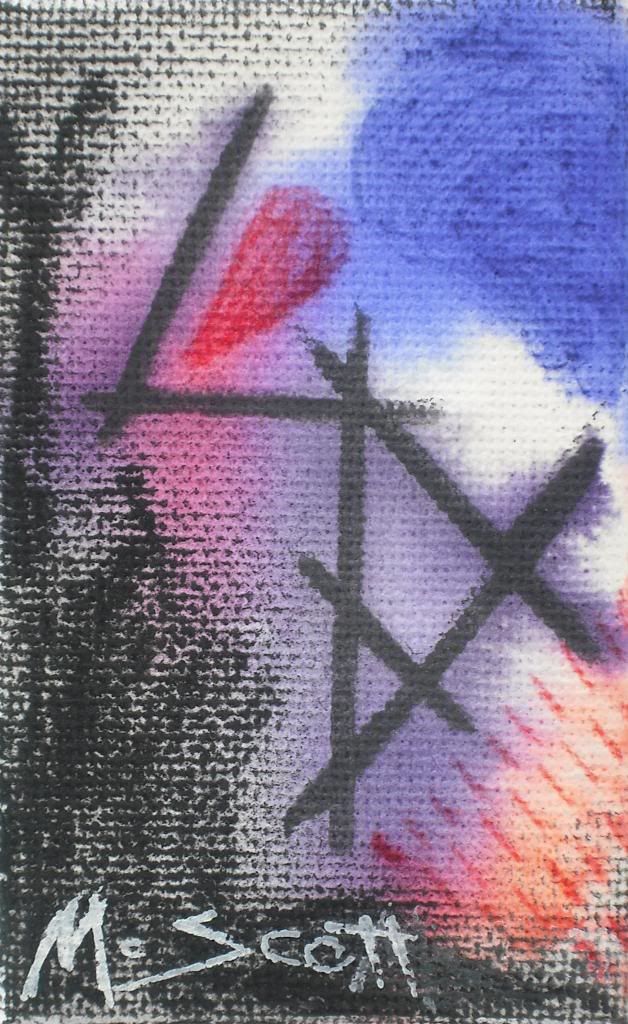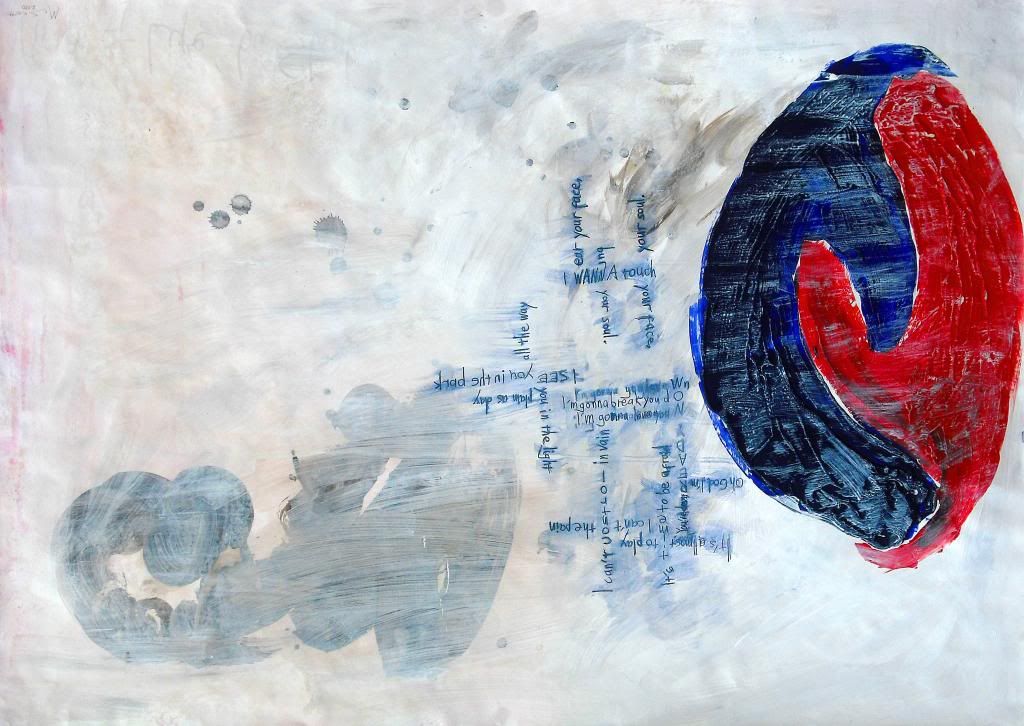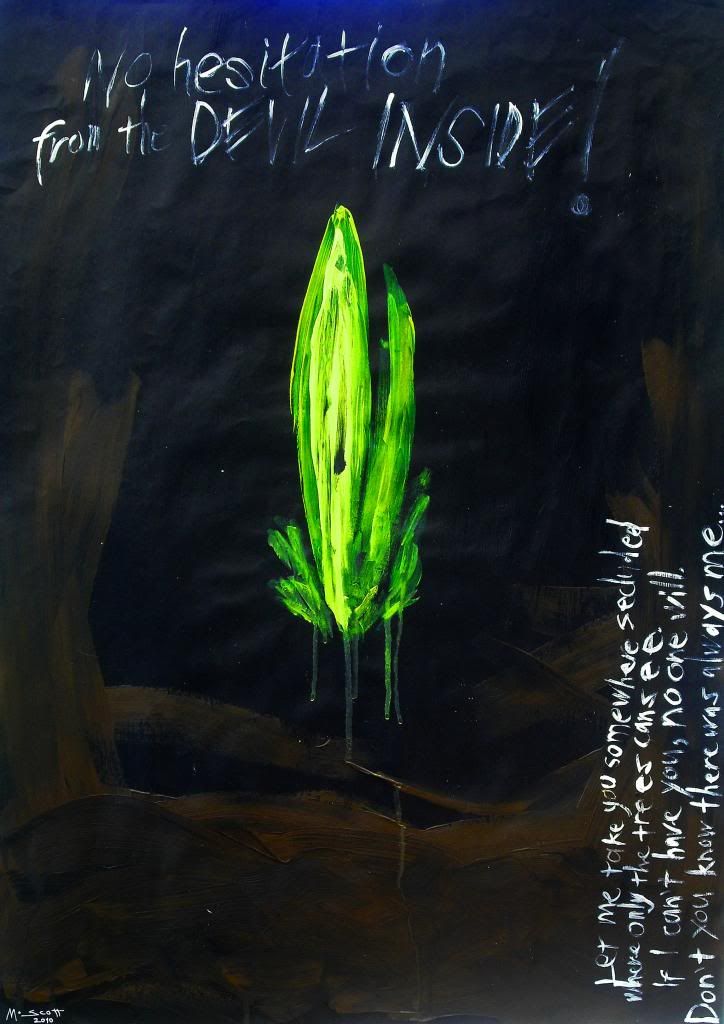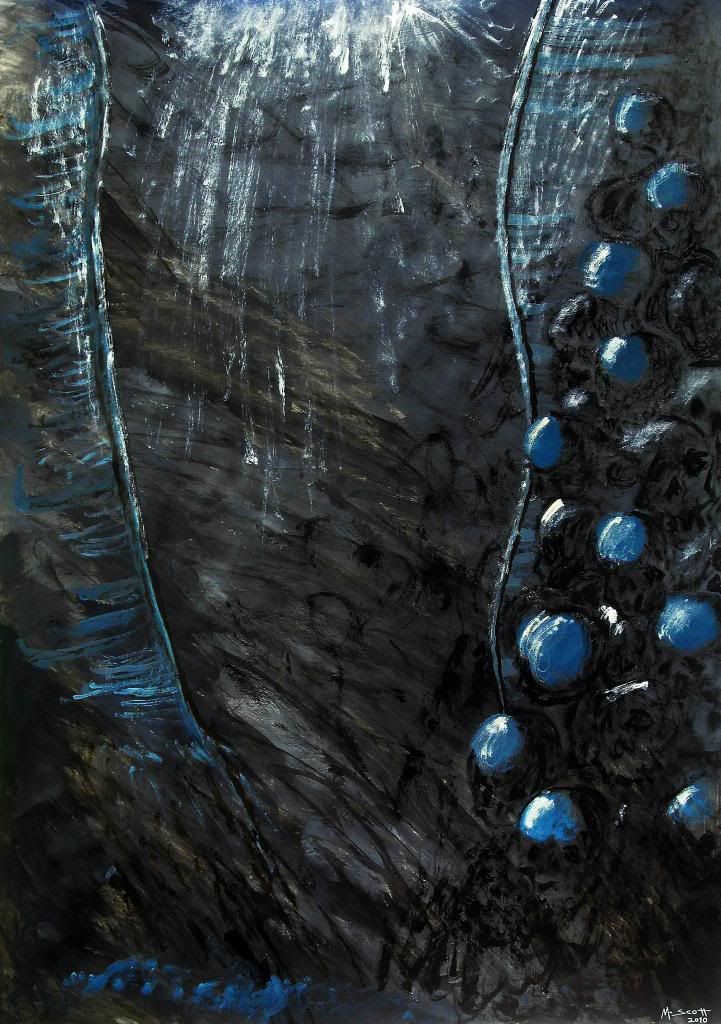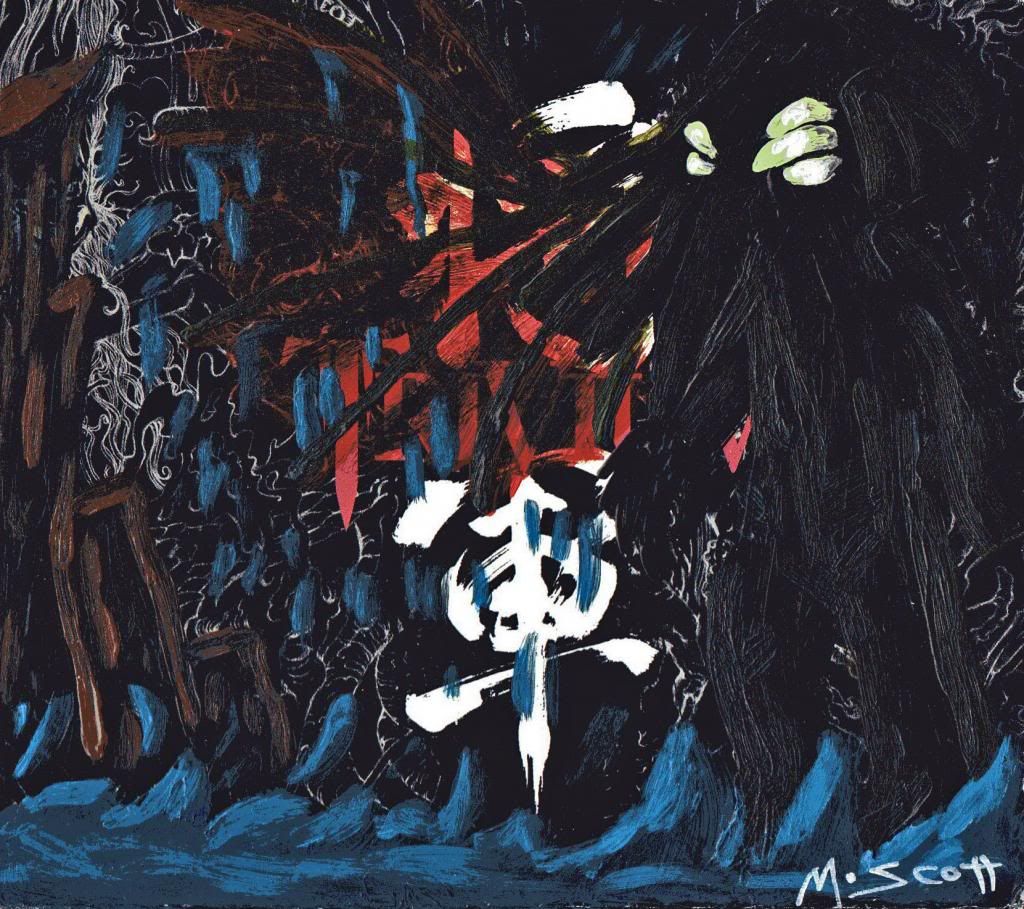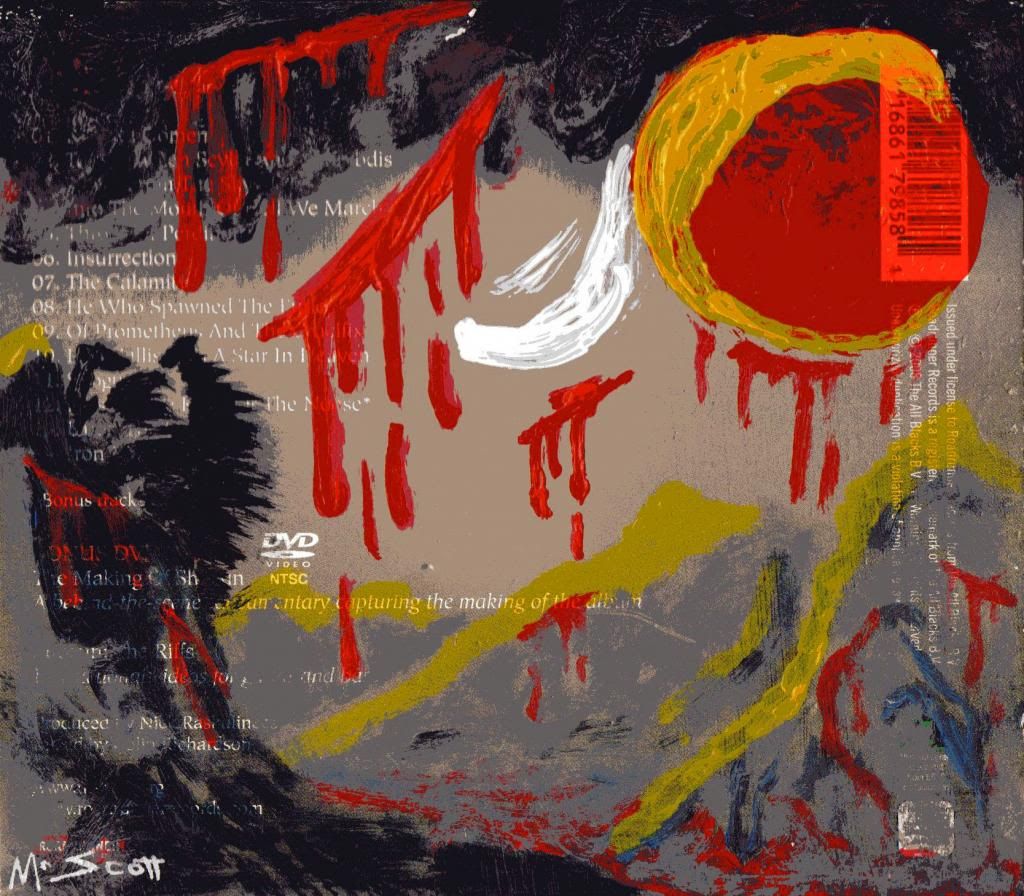Due to the unfamiliarity of textile design and the divergence of the actual brief animation led to, my main focus for outcomes was in painting. By far, this was also the most productive and cathartic point throughout the project.
To some degree, I even took enough time to 'plan out' how my responses to music would be made. However, some painted responses were still for the most part spontaneous in their form.
Design of 'Hellions on Parade; CKY'
'Hellions on Parade; CKY' (2010)
Painting helped expand on the possibilities to how I could express my imagining from the music I listened to, which was always made clear in the titles of my art piece. Although, it is worth considering mixed media responses, incorporating paints with drawing materials. A notable example of this would be Ruska; Apocalyptica, which involved the use of ink. However, I hope to expand onto the use of additional materials.
'Ruska; Apocalyptica' (2010)
'Pour Some Sugar on Me; Def Leppard' (2010)
Interestingly enough, Pour Some Sugar on Me; Def Leppard was the only painting I had done on canvas, the previous two were painted on what was called 'canvas pad', which worked more like card but had a canvas-like texture. Major pieces were done on simple A1 sized paper though some I may reattempt on canvas, or at least a more 'exhibit worthy' material. Here are the A1 pieces, presented as closely to the order of their creation as I can recall:
'The Virus of Life; Slipknot' (2010)
'The Flame; Chimaira' (2010)
'The Prolonging; Triptykon' (2010)
By far, the one I was most pleased with was my response piece to
The Prolonging by the metal band
Triptykon. This one certainly has the foreboding, darkly gothic aesthetic I would come to better associate myself with. In some ways, it also works as a piece on its own as a slightly abstract, dark fantasy art piece. Out of the paintings I produced during the project brief, this was certainly one that worked just as well beyond being a response to music which in its own right opens up possibilities to the impact it can have on an individual witnessing the piece. During the project, I also took on some experimentation with potential media. I chose to work, in some instances, on throwaway materials and expand on the outcomes. As a palette, I took an old magazine, opening it up from the centre page and tearing them out after a painting (though I sometimes had one pallette for mulitple, typically related pieces). These 'pallettes' became unitended responses, a in some ways worked closer to my emotional response to the music in comparison to the more landscape-like paintings.

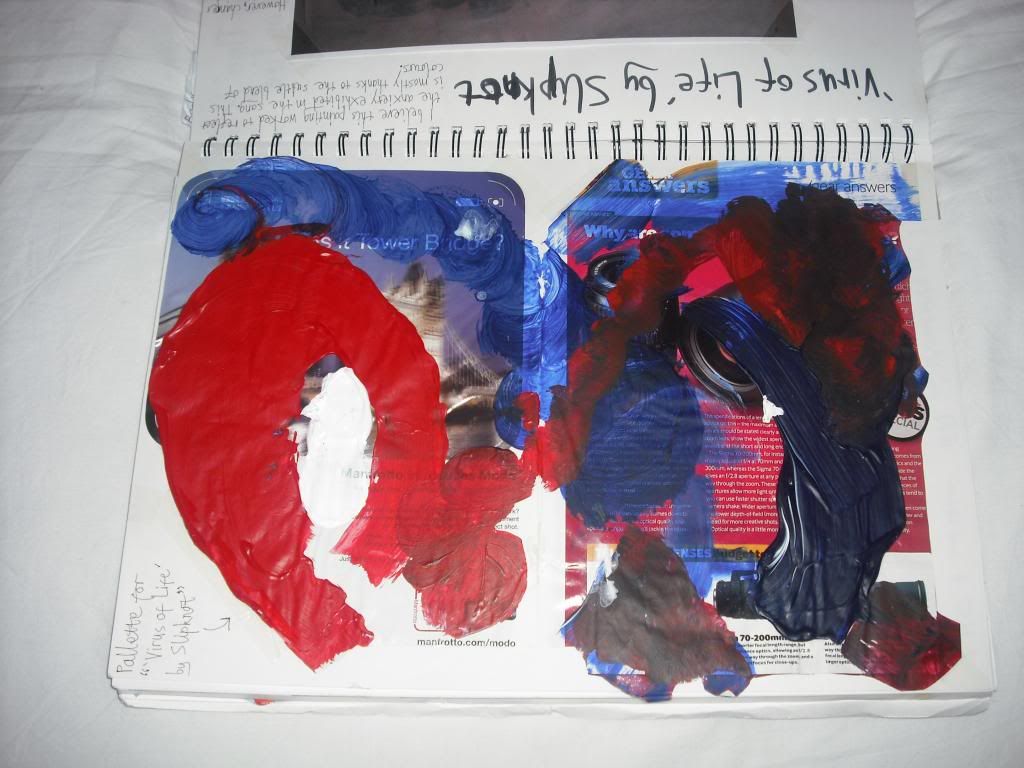
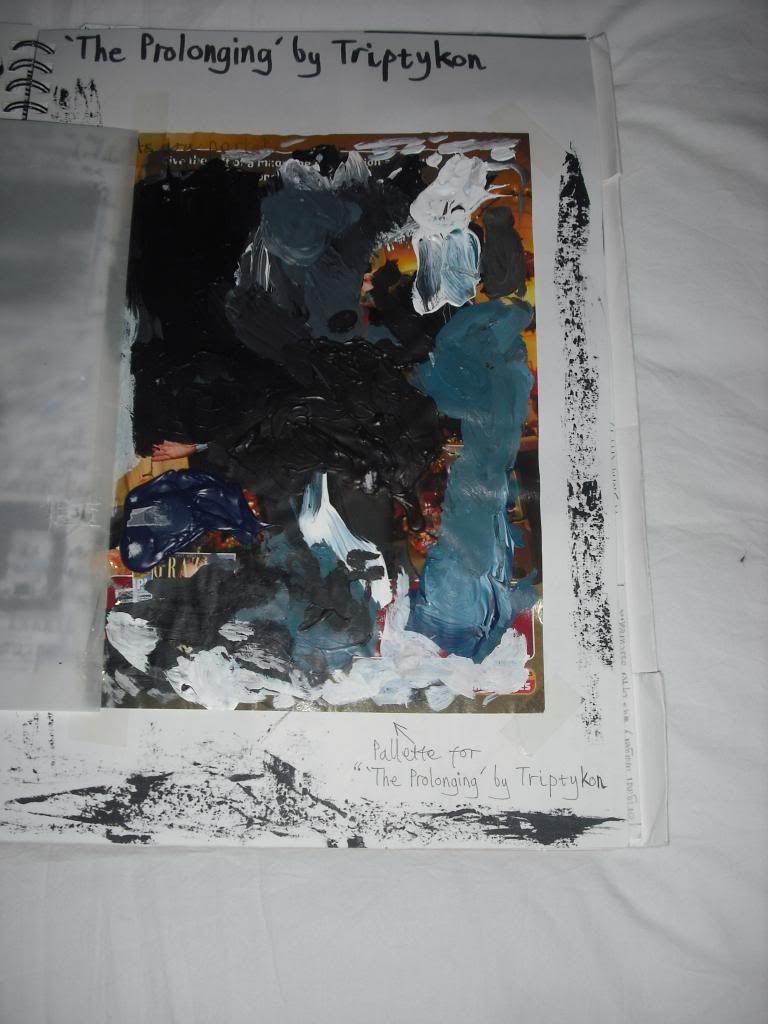
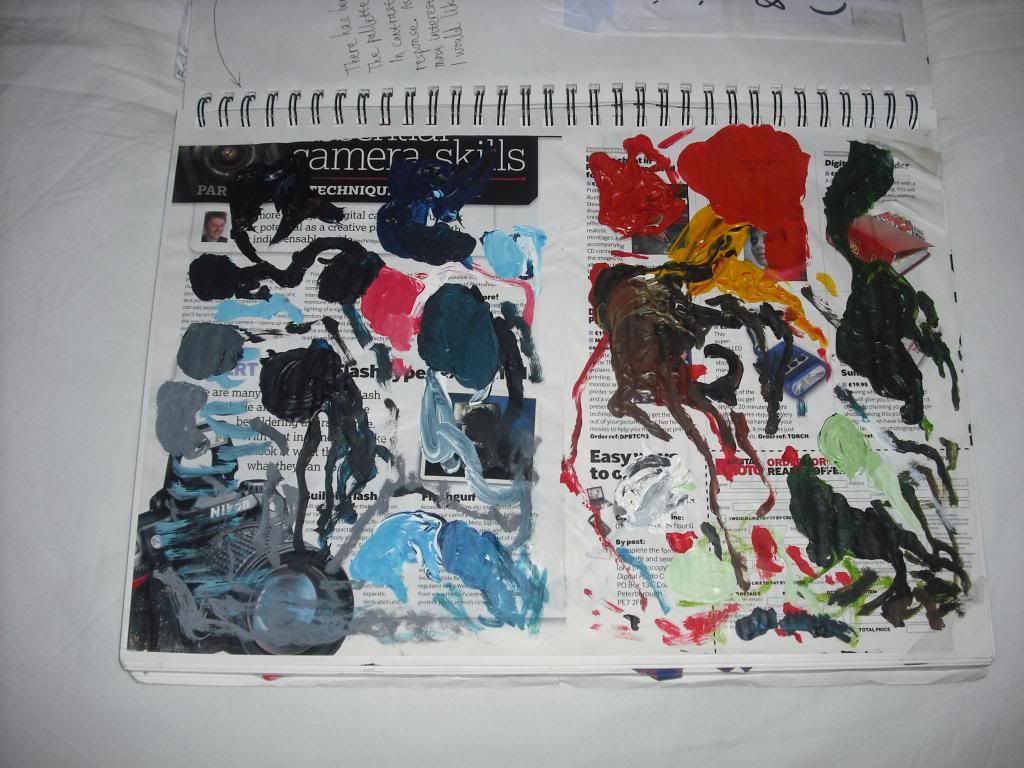
Pallettes for (top to bottom): Hellions on Parade; CKY, The Virus of Life; Slipknot,
The Prolonging; Triptykon and Shogun; Trivium (Triptych)
For some of the throwaway materials, I looked at the possibility of painting on scrap wood and metal but also more household objects. For example,
End of Time/ Soul on Fire; Danzig was a diptych produced from two old placemats and a triptych was painted from the sleeve of an album (called '
Shogun') by the band
Trivium. All songs listened to for the production of the triptych came from the same album the sleeve originally came from. The 'cover' of the triptych was in response to the title track.
Side 'A' of 'Shogun; Trivium' (2010)
Side 'B' of 'Shogun; Trivium' (2010)
There are certainly components of this piece relatable to The Prolonging..., namely in terms of aesthetics.
